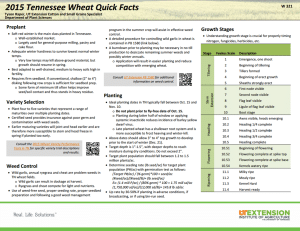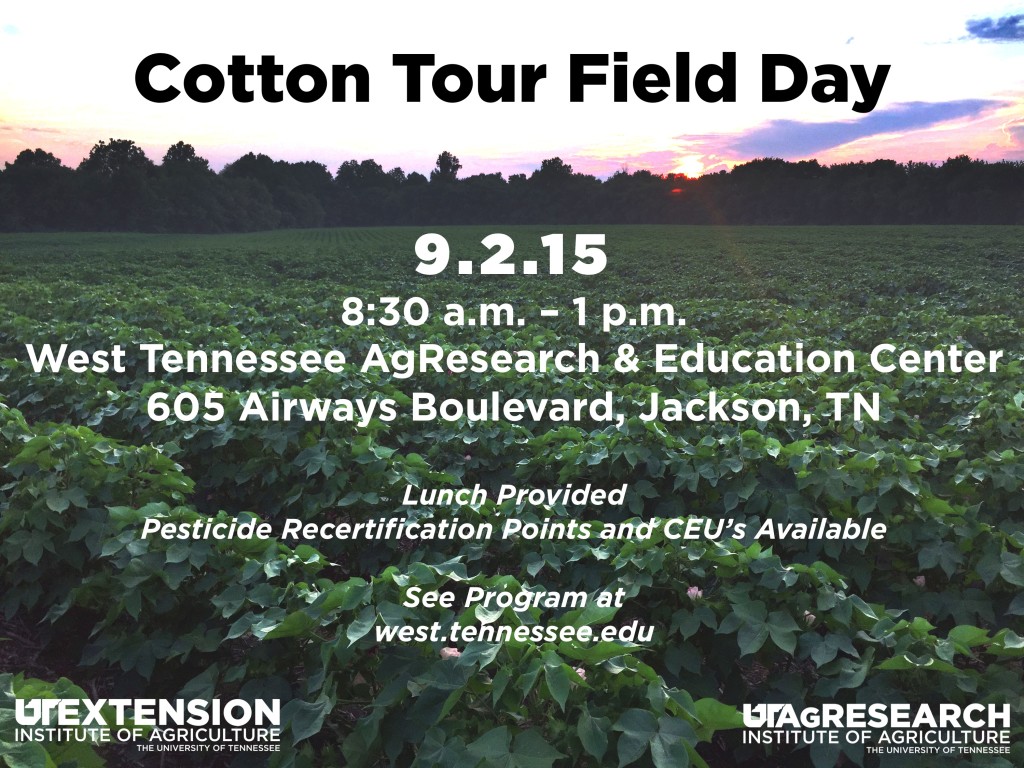 Now available online, the 2015 Tennessee Wheat Quick Facts Publication (W 321) is designed to be a single page (printed front/back) summary of the most pertinent Continue reading
Now available online, the 2015 Tennessee Wheat Quick Facts Publication (W 321) is designed to be a single page (printed front/back) summary of the most pertinent Continue reading
Category Archives: Insects
Stink Bugs and Soybean Aphids in Late Soybean
Soybean Aphids are occurring in some very late soybean fields in the northwest corner of West Tennessee. I’ve had several reports from Dyer and Lake Counties. This is the first time we’ve seen significant soybean aphid numbers in this part of the state. In some years, we’ve seen treatment levels in Middle Tennessee. This invasive pest drifts down from the north and Continue reading
Soybean and Sorghum
Soybean
Although stink bug populations remain generally light, there are now some reports of populations exceeding the treatment threshold of 9 per 25 sweeps. Remember you should probably double this threshold once a field reaches R6. Calls are also trickling in about defoliation Continue reading
2015 University of Tennessee Cotton Tour
 The West Tennessee Research and Education Center (WTREC) would like to cordially invite you to the 2015 University of Tennessee Cotton Tour. This event is scheduled Continue reading
The West Tennessee Research and Education Center (WTREC) would like to cordially invite you to the 2015 University of Tennessee Cotton Tour. This event is scheduled Continue reading
Sugarcane aphids and harvest aids
The questions of the week have been … when/if should I put an insecticide out with my harvest aid for sugarcane aphids in sorghum, or if you are still a week or more from making a harvest aid application, should you hold off with the insecticide until making this application. First, I’ll refer you to a good article from Mississippi State University from last week. This article also addresses if, when, and what harvest aids can be applied. Continue reading
More on green cloverworms and loopers
I’m getting more calls about a fair number of green cloverworms and scattered, below-threshold loopers, primarily in later maturing soybean fields. Please refer to last week’s article about knowing the difference and recommended treatment thresholds for these pests. I wanted to make an additional point or two. Continue reading
Green cloverworms and loopers in soybean, etc.
Calls on soybean insect infestations are not common, and most folks are reporting less than average infestations of stink bugs. However, green cloverworms are being reported in some fields at or near economic treatment thresholds. Treatment is recommended when Continue reading
Update on Sugarcane Aphids in Sorghum
Although a common comment this week has been that sugarcane aphid (SCA) infestations are not spreading rapidly, with most infestations concentrated on field edges, we are steadily treating more and more sorghum fields. You can assume SCA are present in essentially all fields in West Tennessee, but fields requiring treatment are scattered across the area (see below). It hasn’t always been true, but a common theme is that many of the fields treated within the last few weeks with a pyrethroid insecticide are those that have required treatment for aphids. Continue reading

